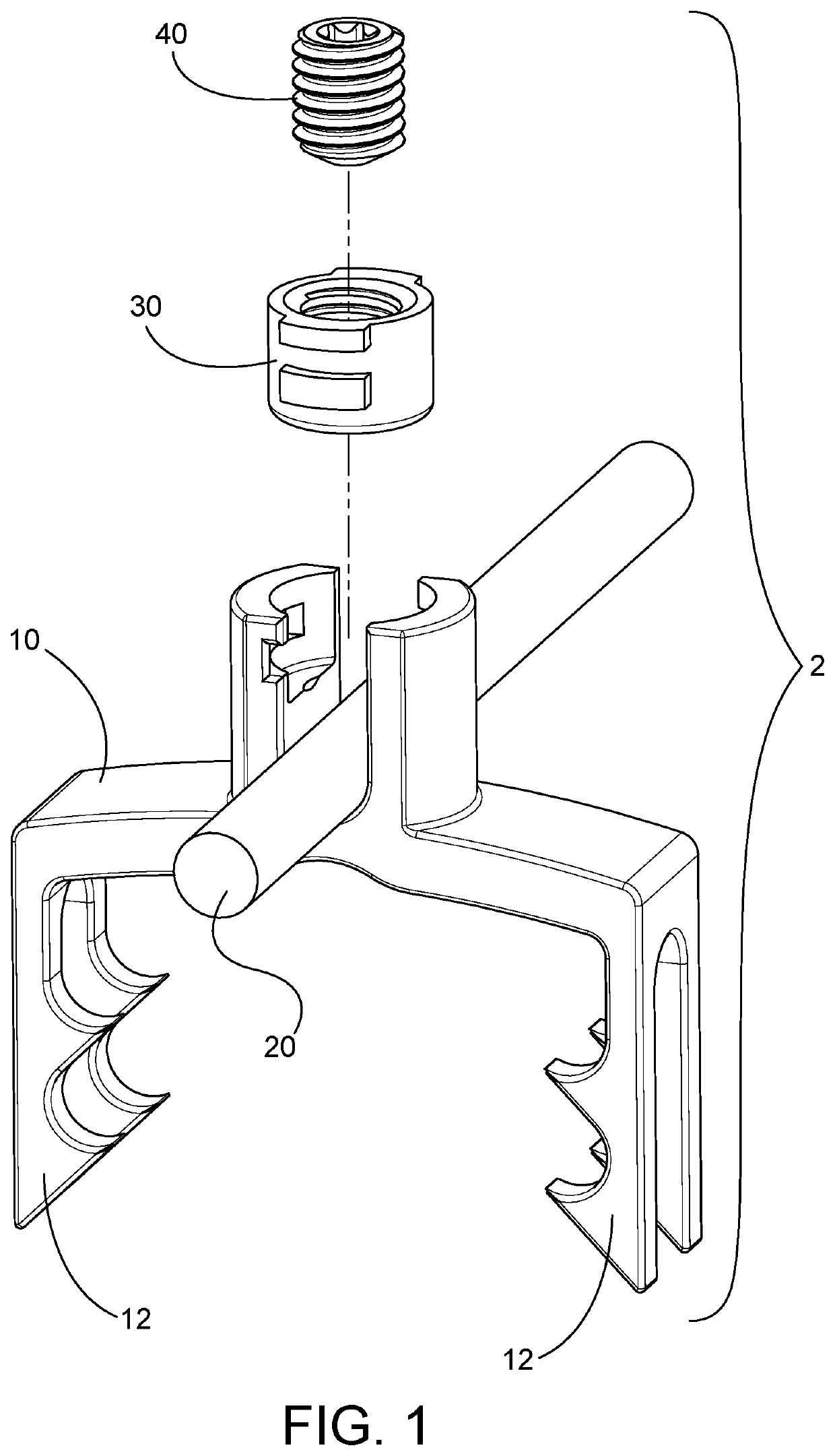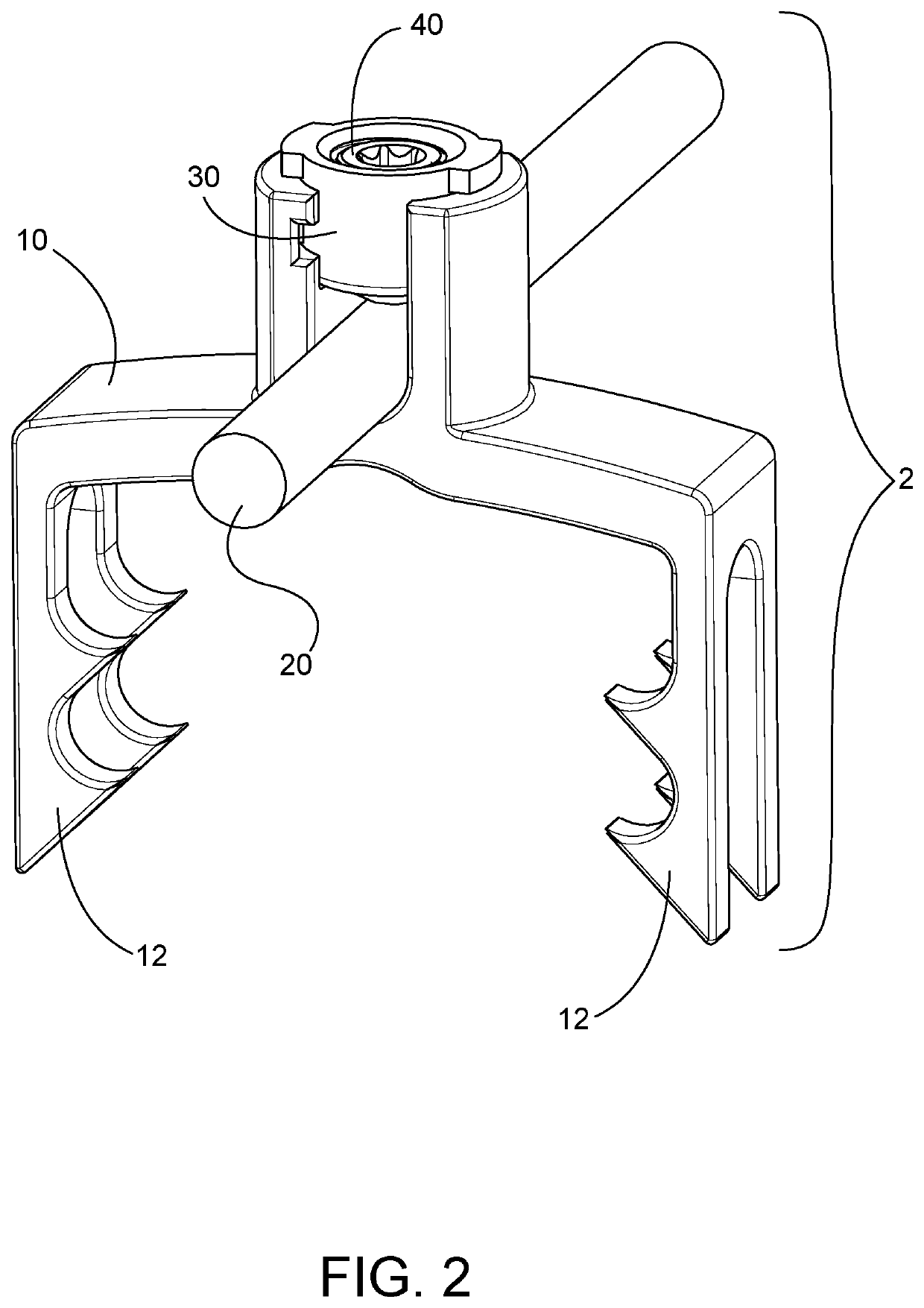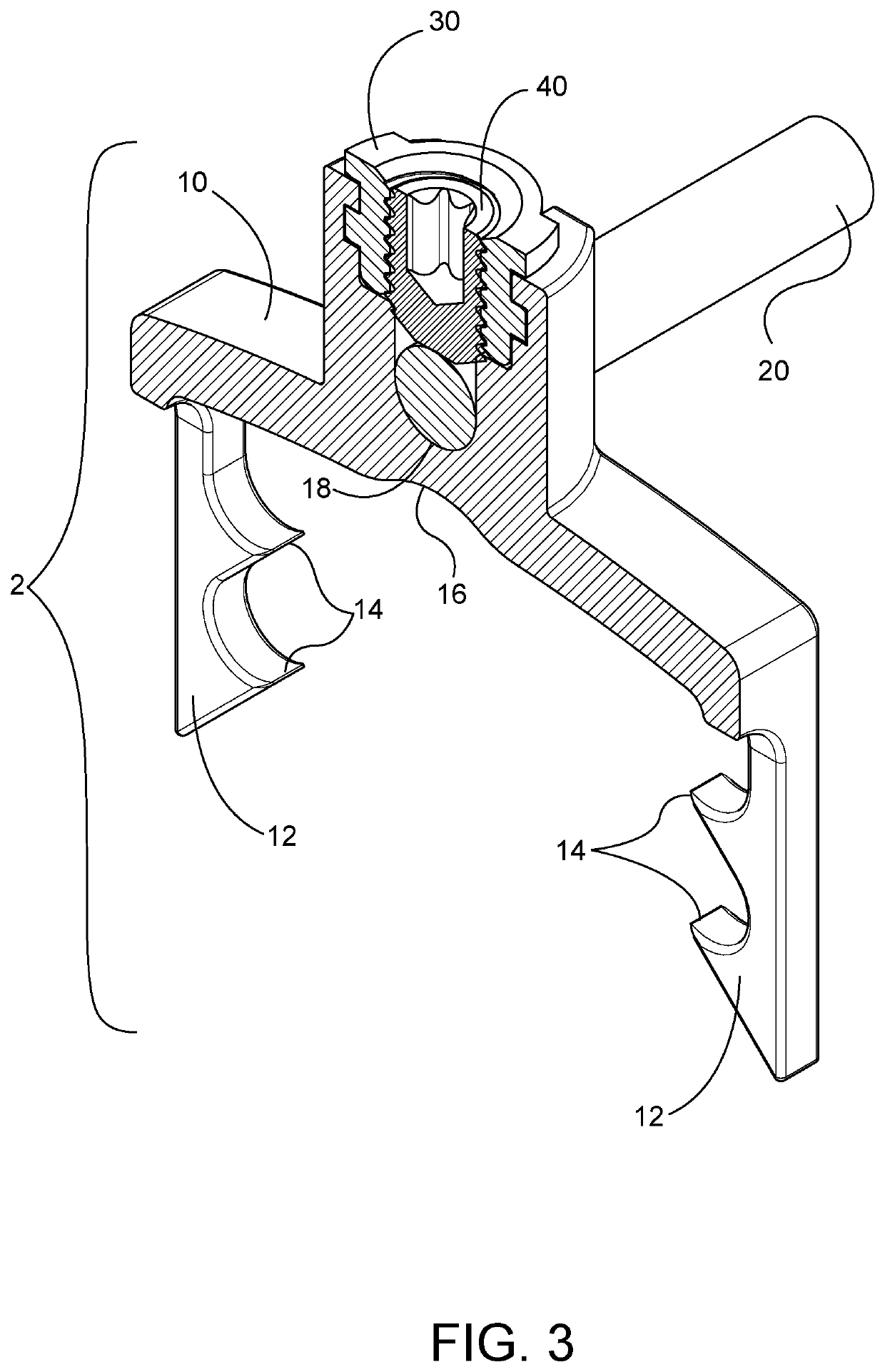Growth and motion sparing tethers and bone anchor implants for the treatment and correction of spine deformities
a technology of bone anchors and implants, which is applied in the field of growth and motion sparing tethers and bone anchor implants for the treatment and correction of spine deformities, can solve the problems of significant limitation of spine motion, poor compliance in young patients, and inability to bend or bend the brace, so as to improve the stability and stability of the spine, the effect of correcting the deformity and reducing the risk of fractur
- Summary
- Abstract
- Description
- Claims
- Application Information
AI Technical Summary
Benefits of technology
Problems solved by technology
Method used
Image
Examples
Embodiment Construction
[0032]In a preferred embodiment, as shown in perspective view in FIG. 4, the bone anchor implant 10 of the present invention is implanted and anchors to the lateral aspect of the bone of the vertebral body while minimizing dissection of the overlying tissue and preserving the segmental blood supply of the spine. The several anchors 10 are joined together by tether 20, which is locked in place by locking caps 30.
[0033]As depicted in FIG. 1, the bone anchor implant assembly 2 is comprised on anchor 10 that has four tines 12 shaped to allow them to span the segmental blood vessels and therefore on insertion, do not need these vessels and the overlying tissue such as the pleura to be dissected and coagulated. In addition, anchor 10 is adapted to receive locking cap 30, and it, in turn, receives set screw 40. Together locking cap 30 and set screw 40 retain tether in 20 in locked relation to anchor 10.
[0034]FIG. 2 further depicts implant assembly 2 with tether 20 locked in place by set sc...
PUM
 Login to View More
Login to View More Abstract
Description
Claims
Application Information
 Login to View More
Login to View More - R&D
- Intellectual Property
- Life Sciences
- Materials
- Tech Scout
- Unparalleled Data Quality
- Higher Quality Content
- 60% Fewer Hallucinations
Browse by: Latest US Patents, China's latest patents, Technical Efficacy Thesaurus, Application Domain, Technology Topic, Popular Technical Reports.
© 2025 PatSnap. All rights reserved.Legal|Privacy policy|Modern Slavery Act Transparency Statement|Sitemap|About US| Contact US: help@patsnap.com



